The daffodils are out in force, and everything is bursting into blossom or leaf as the weather warms. The season is picking up pace. We had a big site anniversary to celebrate, so I did a bit of digging into the history of our allotments.
Plants & Practice is a reader-supported publication, free to everyone. If you’ve already subscribed - hurrah! and thank you! If not, click to enter your email here and join the allotment gang.
This week’s Plot Shot
We have a lot of fruit trees on our allotment plot. Twenty at the last count (*checks on fingers*), twenty-one if we count the ancient, gnarled bird cherry which marks the boundary corner at the front of the plot. The Prunus stone fruit (the plums, cherries, apricots, damsons and the peach) are usually first to get going each spring. This year, the cherry plum and the two ‘Tomcot’ apricots have already blossomed, and the rest of the stoneys are busy budding up.
(Technical note: there are usually a *lot* of photos in this post, mostly mine, and it might not all fit on your email. Hitting the View Entire Message button at the end should sort this out, as will reading via the app or online versions of Substack.)
Plot work in progress
My main job of the week has been in the greenhouse, rather than digging the raised beds out on the plot. (A bit of digging avoidance, there.) Time to liberate this year’s new dahlia tubers from their biodegradable bags and get them into pots of compost to start them off.
Despite the total rookie error of me not remembering to print out my Dymo name labels before I started, and then having to stuff the bags back into each pot to keep track until the next day, fourteen tubers went into their 3-litre pots in no time, plus the one (Thomas Edison, No.15) which looks a bit dubious, but has survived over winter and so deserves another shot. Husband Clive looks more than dubious at me being able to find space for 14/15 full-grown dahlias out on the plot come the summer, but I have A Cunning Plan. Now to keep watch for which tubers sprout first. Expect photos.
Equally cunning (indulge me) is my carefully-measured, snazzy new watering can station on the side of the shed. I got fed up kicking plastic watering cans around on the floor of the greenhouse, or piling them into the shed in a messy heap. Cue a bout of juggling with them against the shed to measure up for suitable hooks. How big a hook to fit the handles onto? Would they hang flat against the shed wall? Would they stay on the hooks without the wind blowing them away?
So far I’m pleased with my DIY handiwork. I have loads more floor space in the greenhouse, and the shed is no longer a total trip hazard. Watering can mischief, managed.
Harvesting now
Our most prolific crop right now are the daffodils. We don’t have any special varieties - these are all the (grand)children of a bargainous 3 kilo remaindered sack of daffs bought in a hardware shed a few years ago. But they’re great on the plot, and for picking.
Making and eating
Daffodils aside, the edible plot produce is still all about the beautiful purple sprouting broccoli. PSB is super prolific!1 I know I’ve featured photos of PSB for three posts running now, but it is too beautiful not to.
So far, it has gone into pastas, a gratin-ish, and more may make it into a stir-fry and possibly some sort of bake, depending on how well the plants keep on cropping2.
E17 Local Hero?
This week our allotment site hit its 175th anniversary, which is quite the milestone, given how many London allotments have been turned over to property developers to speculatively build posh flats, cleared for ever-widening roads or plain bulldozed to create the facilities for the London 2012 Olympics.
A dig into local records showed that our site was first enclosed as statutory allotments on 21 March 1850, by a grant of land by a Lord Maynard, the (I think) third Viscount / sixth Baron Henry Maynard. His name is on this old map, showing the various landowners in the 1800s, including a certain T. C. Warner Esq., one of the largest landowners in Walthamstow by the 1880s and well known locally as the builder of streets of distinctively-styled red brick ‘Warner’ houses for working people, which are still a hallmark of the area today. They cost a tad more than the original £7 sale price now.
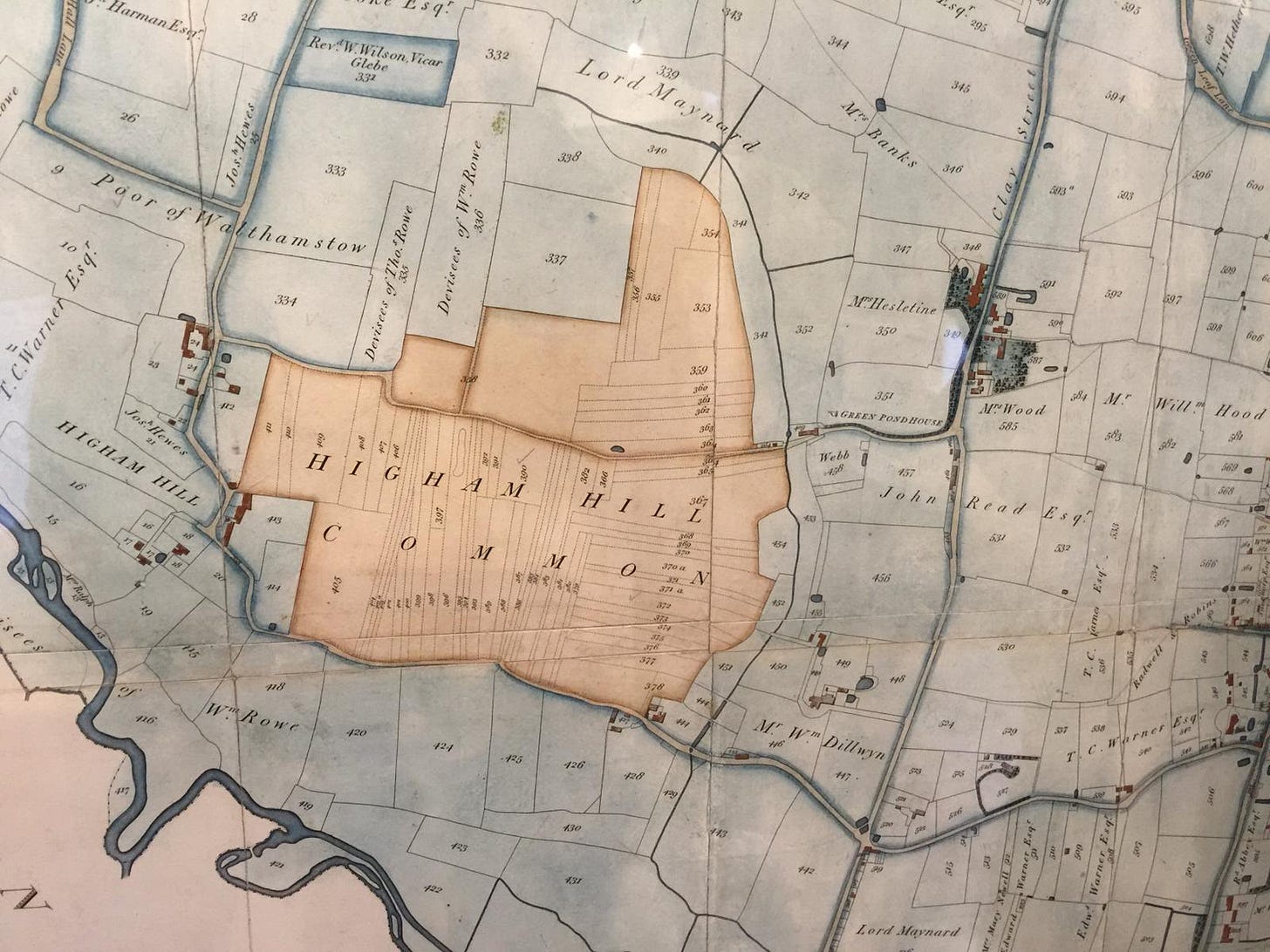
Turning the map around so that north is the (more typically) top edge, our allotment site is the right-hand section of the orange plot of land (sections 359-364), east of the area marked as Higham Hill Common (365 - 411). In 1850 the allotments were split off from what was then the common land of Higham Hill Common, and the site marked out in 40 rod (1⁄4 acre, 1,000 m2) plots for The Poor of Walthamstow (who are also on the map) to cultivate and to graze their animals on from about 1852. The remainder of the common land of the Common didn’t last much longer - the combination of parliamentary enclosure acts and builders like T. C. Warner Esq. saw to that.
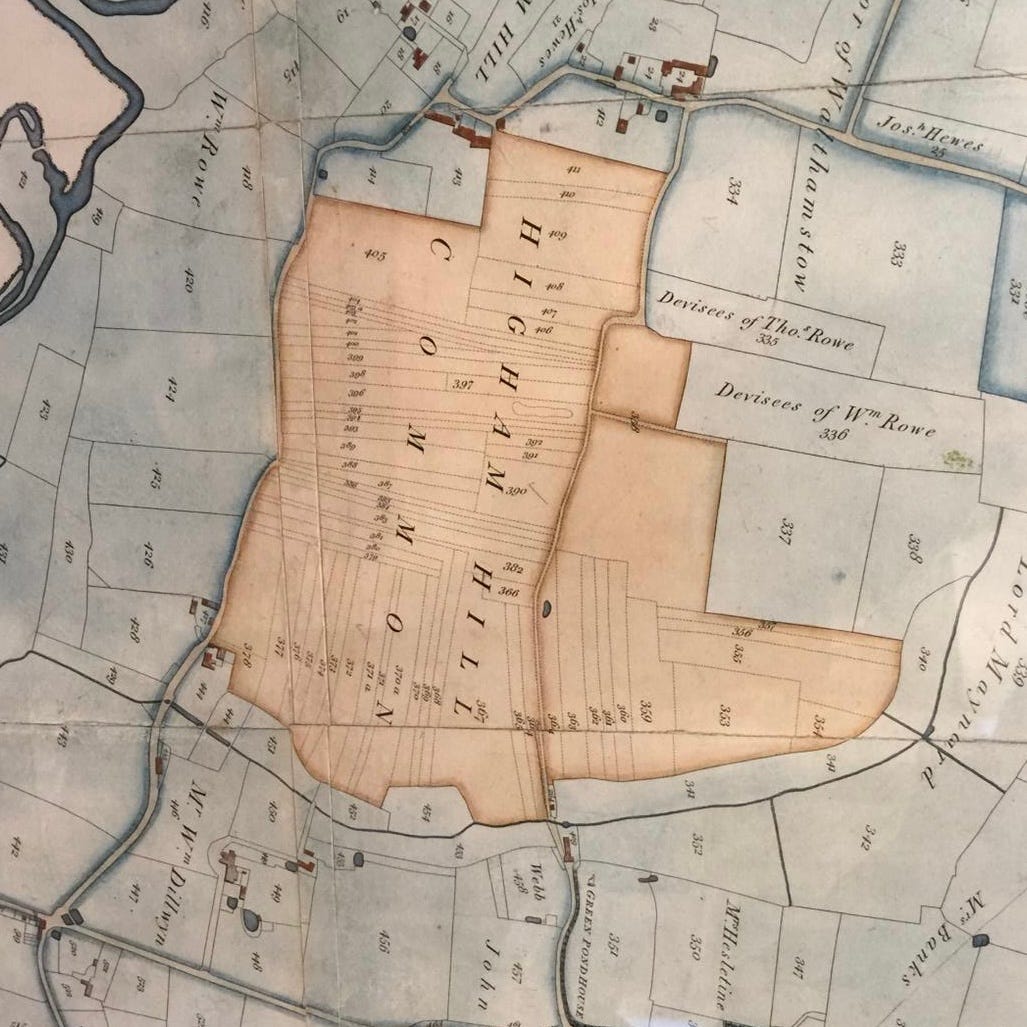
The Maynards were first created Baronets in 1682, later promoted to Viscounts, both ranks of peerage addressed as Lords. They were variously Henrys and Charleses with an occasional William thown in over almost two centuries (which often makes untangling the differing records confusing, even without the flip-flopping between Baronet and Viscount titles), until the male line of the Maynards became extinct, like aristocratic dodos, in 1865. But there is still a legacy of the Maynard family around Walthamstow - a Maynard Road, a Low and a High Maynard Reservoir, now part of the lovely Walthamstow Wetlands nature reserve - plus a Maynard Quay further afield in Wapping and a Maynard Arms pub in Crouch Hill.
It’s an odd thought that an apparent act of philanthropy by a random minor peer in the 1850s, granting land to the poor to feed themselves, created the allotments which we still work today, 175 years later, but given that old Maynard owned 560 acres of land in Walthamstow in 1843 (and probably more in Essex and elsewhere), perhaps our bit of all that acreage didn’t seem a particularly heroic gesture back then. Maybe he just created the allotments to move the poor folk, then be able to enclose, and carve off, the rest of the common land of the old Common for sale? Hmm.
Community of Practice
Reflecting on our 10 square rod (1⁄16 acre or 250 m2) plot, I wondered how any of us would manage a full 40 rods (1⁄4 acre, 1,000 m2), the size of plot that the site was originally divided into back in Maynard’s day. Of course, the short answer is that most of us probably couldn’t, not with full-time jobs to hold down. But the 40 rod history did make me think hard about how much work it would take to make that amount of land truly productive to feed an extended family. No power tools, all manual labour = hard yards. The only way to do it would be by common effort, everyone helping everyone else in turn.
Plus, the 40 rod plots assumed that land was needed for grazing animals, for their milk and meat and also to provide manure for the growing of vegetables. We don’t have cows, pigs or sheep to graze (which is probably just as well, given the extended fox family in residence), and animals aren’t permitted on allotments any more. No more keeping rabbits for food, which was common in WWII to supplement meagre meat rations. I remember my maternal grandparents kept rabbits during the war - they still had the old hutches in their back garden when I was very small.
Over tea, discussing the 175th anniversary, the allotment gang agreed that us having a shared plot to keep a goat held in common, moving it around our plots to keep the brambles and pernicious weeds down would be a great idea, if only the goat could be trained not to eat the produce. Not such a great idea then. Keeping ducks to eat the slugs was also mentioned (ducks enjoy slugs, their equivalent of fine oysters), but again, ducks wouldn’t survive the foxes’ appetites and then we’d be sad. I don’t think we’ll be branching out into animal-keeping any time soon. Our collective practice won’t stretch that far, so we’ll stick to growing the fruit, flowers and vegetables.
Weekly Fox News
Vixen Nellie is giving me her best side-eye this week. She’s wary, probably as she has two or three cubs in a den nearby and doesn’t want anyone to work out where they are while they are still small.
If the last few years are any indicator, she’ll move her brood a few times, as they grow bigger. Last spring, we saw her lift each of her three cubs out by their necks from underneath an abandoned shed and carry them one by one across the main path into a new den she’d dug in a dense bramble patch. The cubs were still blind and dark brown, like little bears.
Until next week, thanks for reading.
Ang
Yet another 600g of PSB, £3.90 per 300g on Ocado, total £7.80 for the week.
Produce tally for 2025 now stands at £19.50 so far this year, thanks to the mighty broccoli.

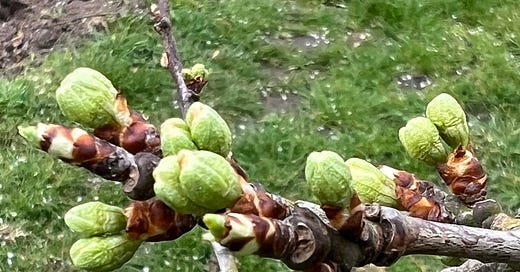



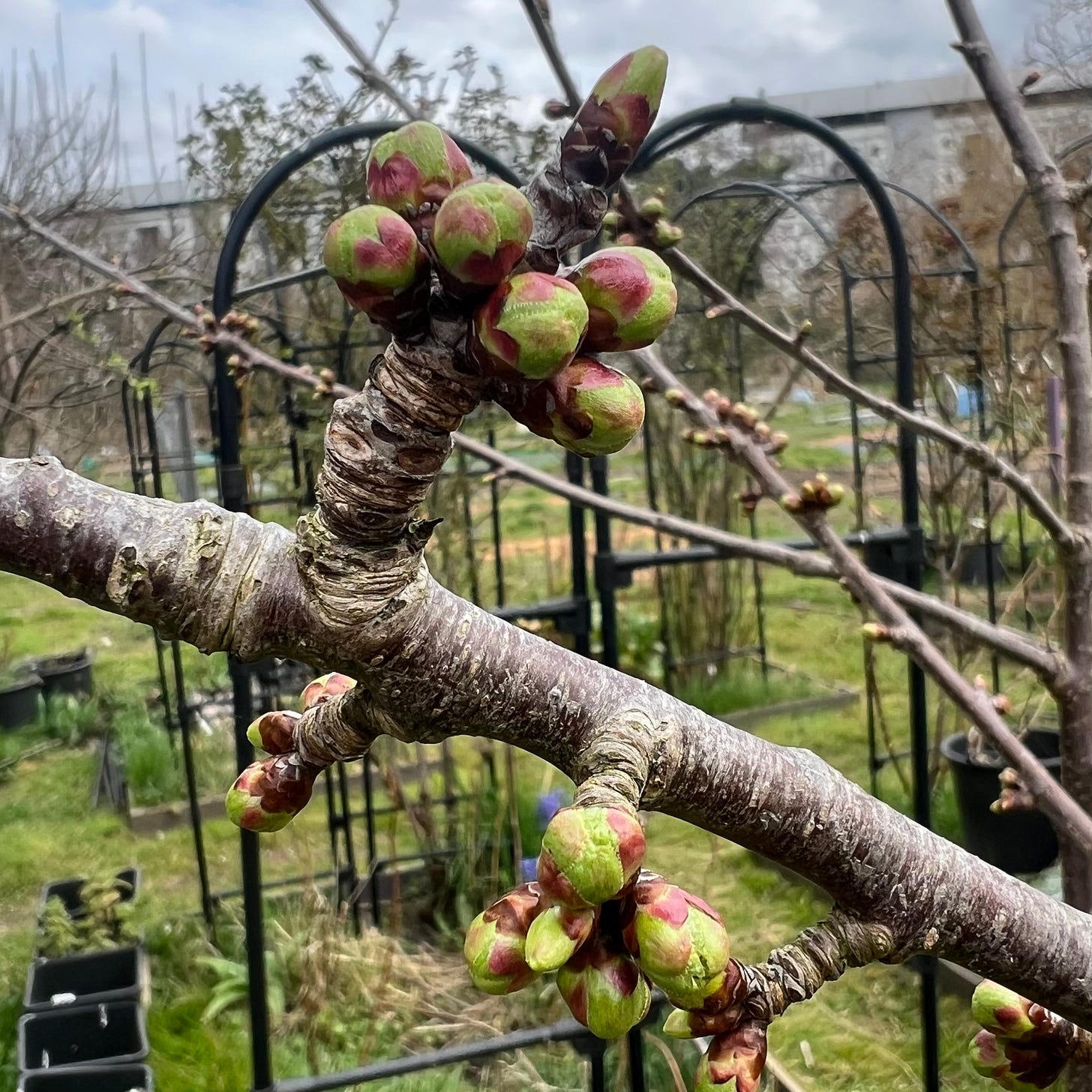


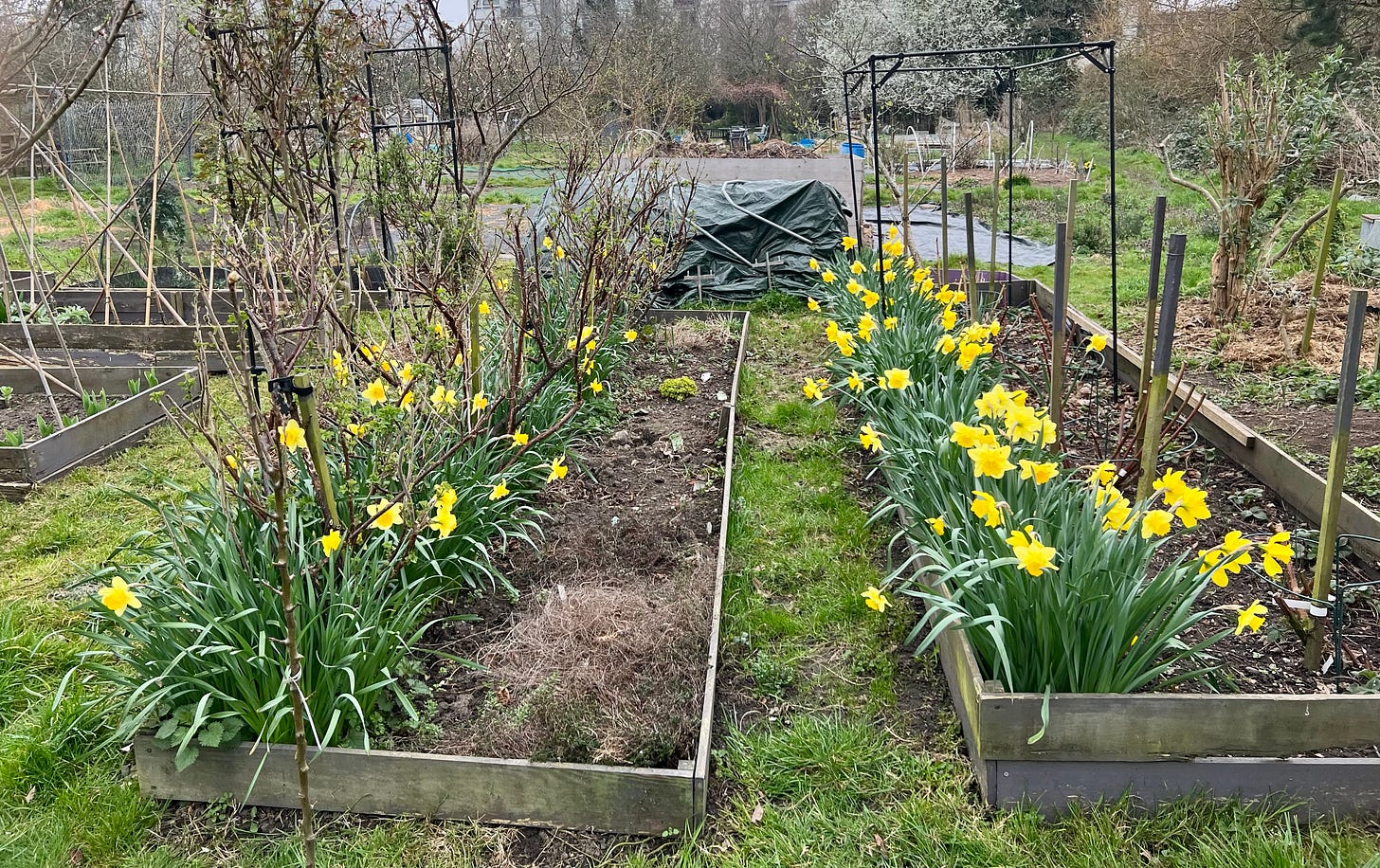
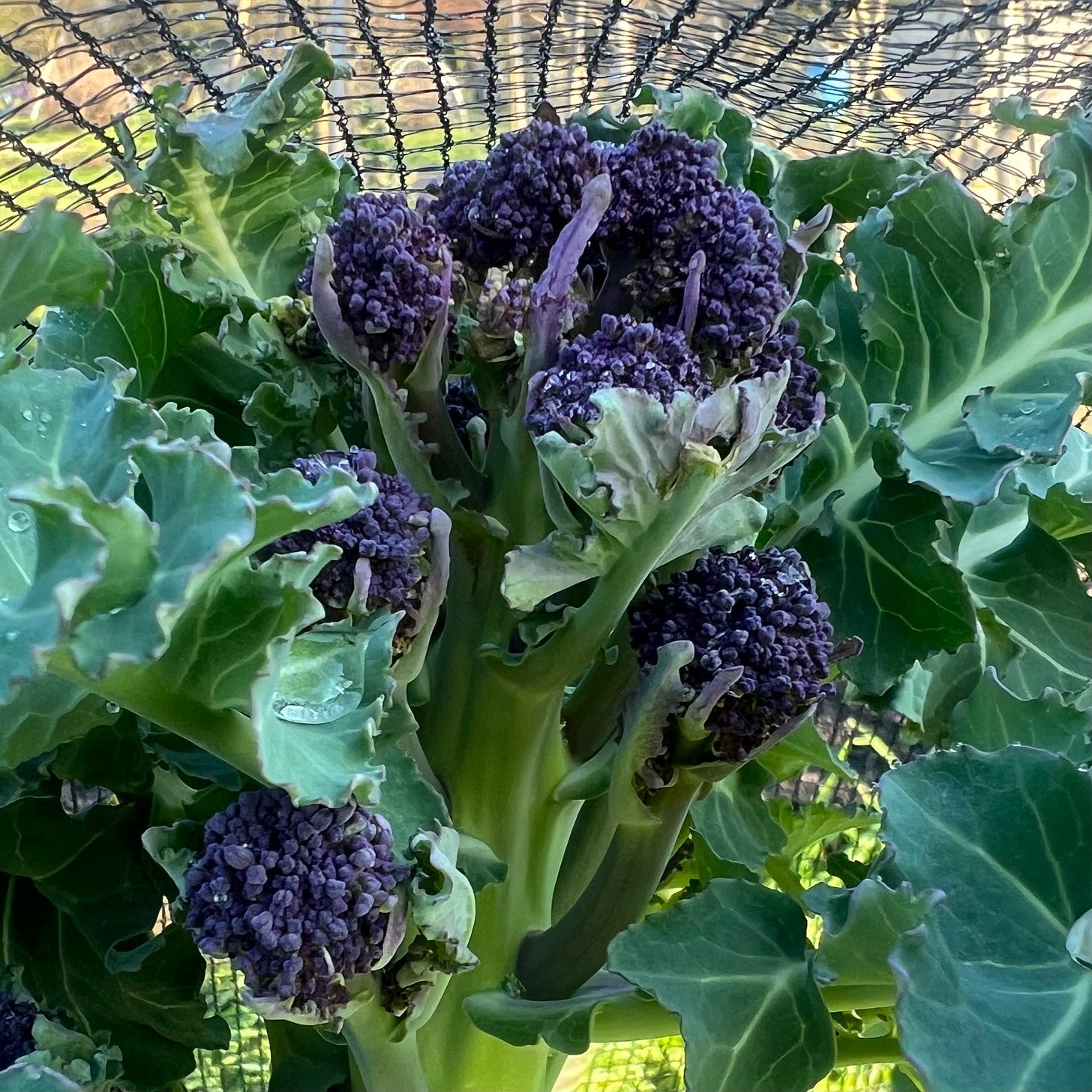
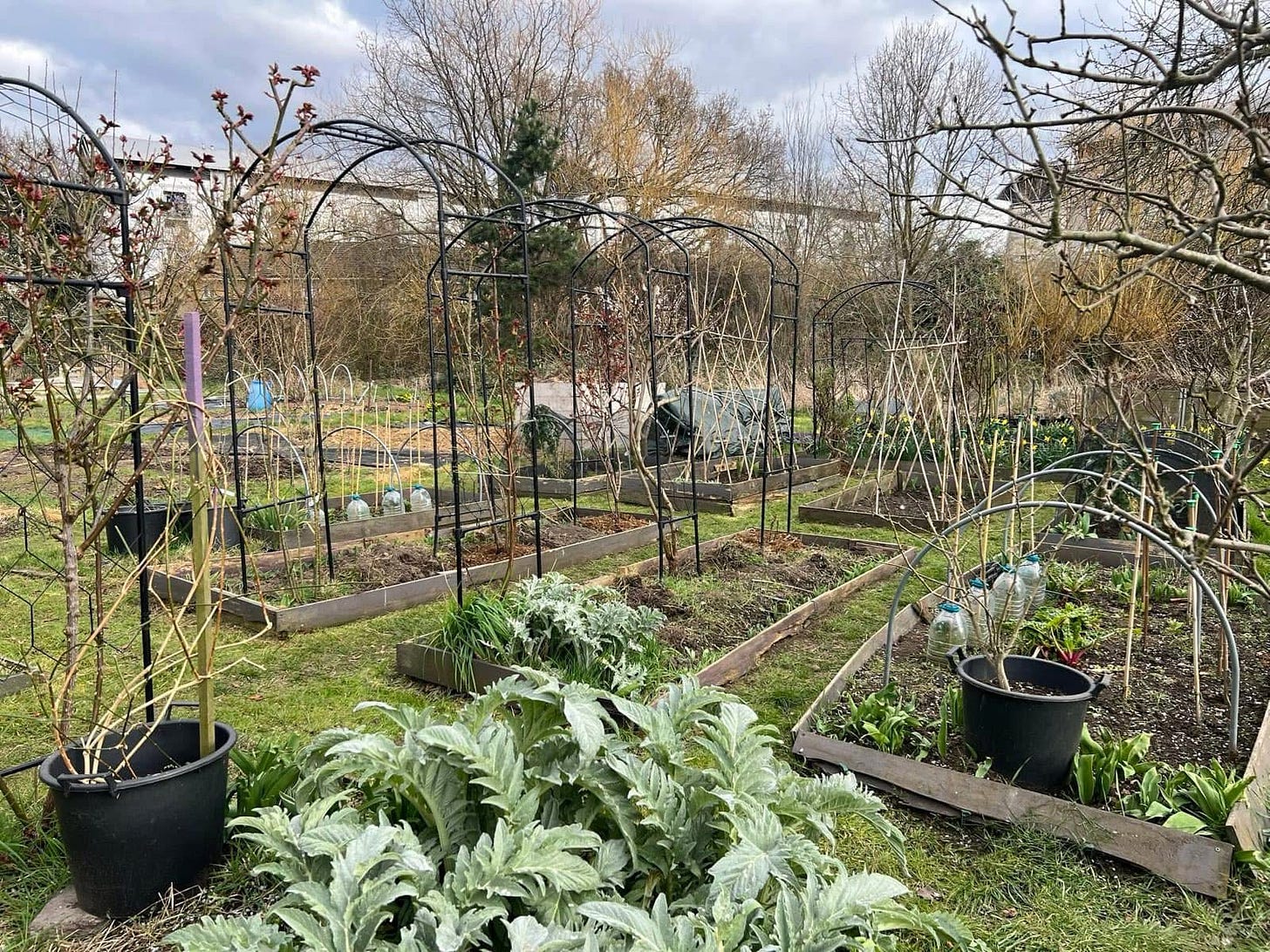
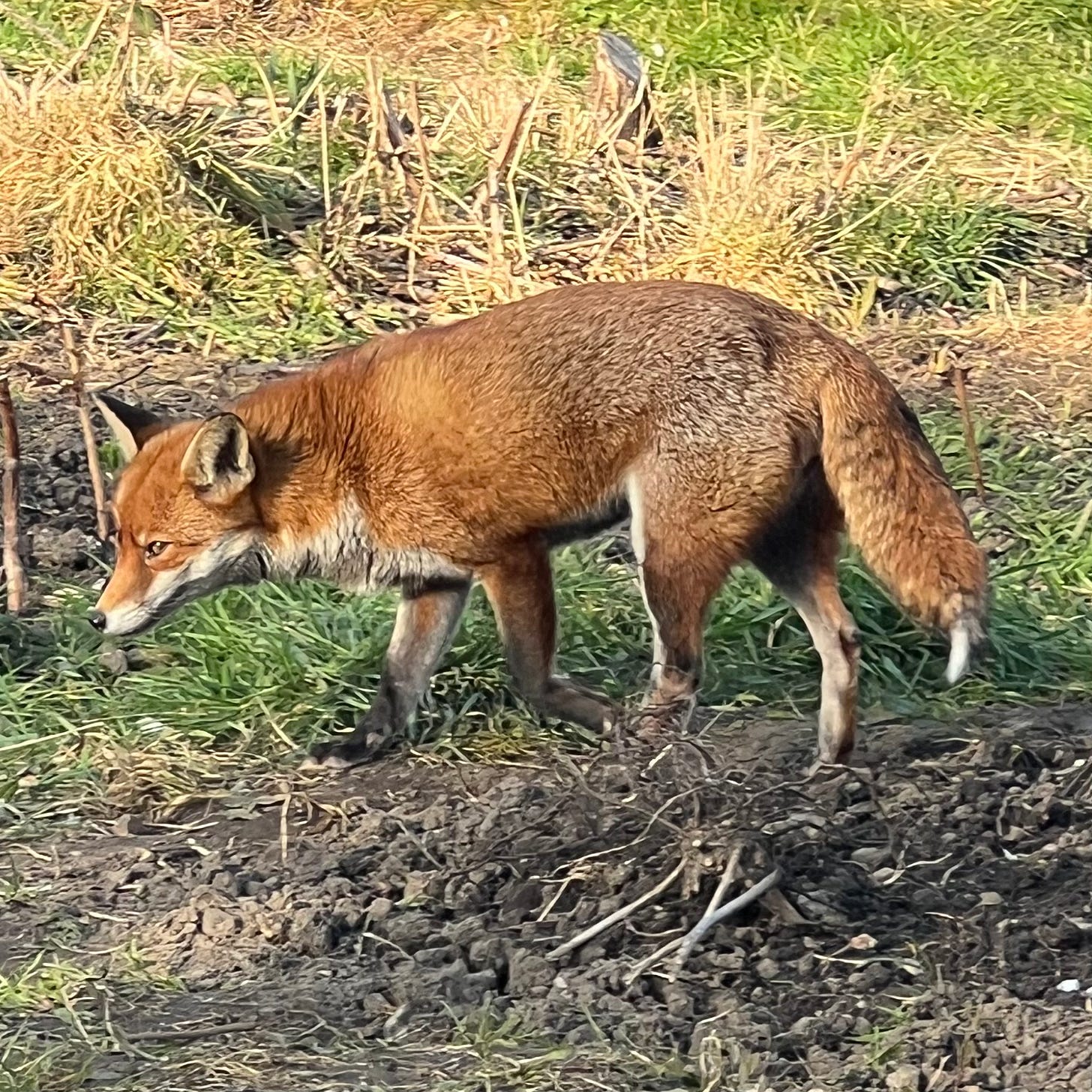
Nice bit of history! Also impressed by your watering can station. I’m sure ours are breeding so may do the same!
Loved this - and fascinating to think about the size of the plot and what’s needed to supply enough food and to maintain such an area. PSB is A Beauty!